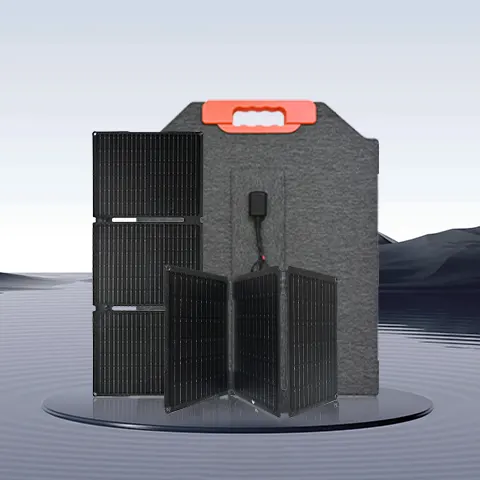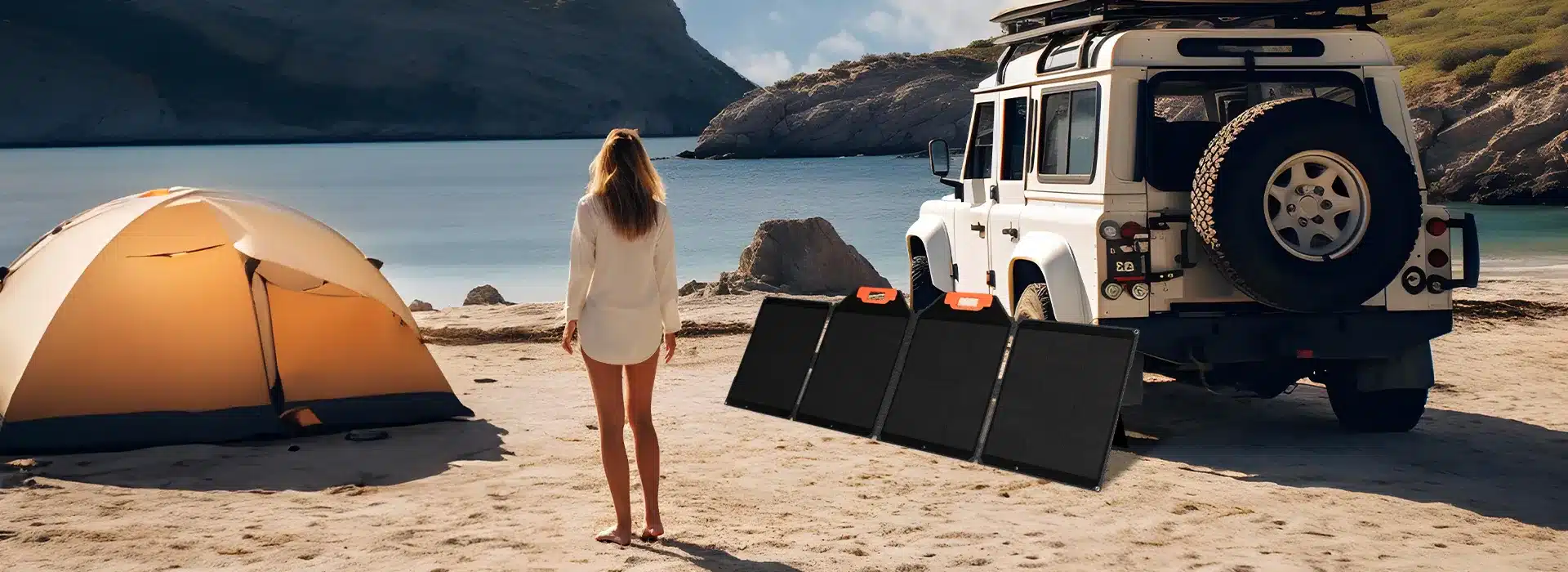How long do portable solar chargers typically last?
The lifespan of a portable solar charger often depends on several factors, including build quality, frequency of use, and maintenance. A high-quality portable solar charger will typically last 5 to 10 years with proper use and maintenance. However, battery performance gradually degrades over time, which may affect the charging efficiency of the charger. Cleaning your solar panels regularly and avoiding prolonged exposure to extreme environmental conditions can help extend their lifespan.

The longevity of a portable solar charger depends on several key factors:
Manufacturing Quality: Sungold uses high-quality materials and advanced manufacturing technology to significantly improve the durability and long-term performance of the charger.
Frequency of use: Frequent use of the charger may accelerate the aging of the battery and circuits, thereby shortening their service life.
Maintenance and maintenance: Clean the solar panels regularly to ensure that the connections and battery components are free of dust, dirt and damage, which helps maintain the best working condition of the equipment.
Storage conditions: Proper storage conditions, such as avoiding moisture, extreme temperatures, and direct sunlight, can extend the useful life of your charger.
Battery type: The type of battery also affects life, for example lithium-ion batteries generally have a longer life between charge and discharge cycles.
Environmental factors: Long-term exposure to extreme weather conditions, such as high temperatures or freezing temperatures, may affect the performance and lifespan of your solar charger.
With these factors in mind, users can maximize the life of their portable solar chargers through proper use and care.

Typical life of portable solar charger
The lifespan of a solar charger can vary depending on factors such as type, model, and use. On average, a high-quality solar charger will last between 5 and 15 years. Portable solar chargers often have a shorter lifespan due to constant exposure to harsh environments. Stationary solar chargers, on the other hand, can last longer if properly maintained. Please keep in mind that these estimates are based on industry standards and personal experience may vary.
Protect portable solar chargers from the environment
If you want to keep your renewable energy running efficiently, it’s important to protect your portable solar charger from the environment. High-quality solar panels are designed to withstand different weather conditions such as rain, hail, snow, and wind. However, they are not invincible in the face of extreme environments such as lightning strikes and snowstorms. To ensure that your solar panels continue to perform at their best, it’s important to take steps to protect them. You can keep your panels running efficiently by cleaning them regularly and renewing the protective coating regularly. Additionally, you’ll want to make sure you install them in an area that gets plenty of sun and is protected from damaging elements, and invest in protective screens to cover them when extreme weather strikes.
Proper storage of portable solar chargers
Although portable solar panels are lightweight and do not take up much space. But it’s also important to protect it from extremes of temperature, humidity and physical effects during storage. First make sure to store the panel in a dry, cool place out of direct sunlight and install a cover to create a protective layer over the panel. Secondly, make sure the battery panels are well stored. After all, they are the most expensive component and the easiest to store. It is best to place it vertically when storing, and no heavy objects should be placed on the panel. You can also use storage bags to keep all the parts of your solar panel together to prevent them from being lost or damaged.
Cleaning and maintaining portable solar chargers
Regular cleaning prevents dirt and debris from building up on your panels, extending their lifespan. When cleaning, be sure not to scratch the surface. Additionally, regularly checking cables and connections to make sure there are no loose or damaged parts can go a long way. Once small parts are found to be damaged, they should be replaced and repaired immediately to avoid accumulation of problems.

Disposal and recycling of portable solar chargers
As a responsible consumer, it is important to know how to properly dispose of your solar chargers once they have reached the end of their useful life. Solar chargers contain valuable materials that are recyclable, reducing environmental impact. Research local recycling programs or contact the manufacturer to explore available recycling or responsible disposal options.
Extend the life of your portable solar charger
To maximize the life of your portable solar charger, follow these tips:
1. Avoid overexposure: Although solar chargers are designed for outdoor use, long-term direct exposure to strong sunlight may accelerate material aging. After use, try to store it in a cool and dry place.
2. Regular cleaning: Keeping solar panels clean can improve photoelectric conversion efficiency. Gently wipe the surface with a clean soft cloth to remove dust and dirt.
3. Avoid mechanical damage: Be careful when carrying and using it to avoid falling or heavy pressure, which may damage the internal circuit or battery.
4. Reasonable charging and discharging: avoid completely discharging to automatic shutdown, and try to start charging when the battery power is less than 20%. This helps protect battery life.
5. Proper storage: When the charger is not in use, it should be stored in a dry place with a suitable temperature and away from light. When not in use for a long time, it is recommended to charge the battery every few months to maintain battery condition.
6. Use appropriate accessories: Use accessories and chargers recommended by the manufacturer and avoid using non-original, low-quality accessories, which may cause damage.
7. Avoid extreme environments: Try not to use solar chargers in extremely hot or cold environments. Extreme temperatures may affect battery performance and circuit stability.
By following these simple maintenance and usage recommendations, you can significantly increase the efficiency and longevity of your portable solar charger.

Frequently asked questions
Common questions about the lifespan of portable solar chargers often involve how quickly they lose charge, whether they discharge when not in use, and whether capacity decreases over time. Here are some frequently asked questions and answers on these topics:
Why does my portable solar charger seem to die quickly?
There are several reasons why your portable charger may be losing power faster than expected:
Over time, all types of batteries gradually degrade and their maximum energy storage capacity decreases. If your charger has been used for a considerable period of time, the battery’s capacity may have been reduced.
If the solar panel fails to effectively receive enough sunlight, or the lighting conditions are poor (such as cloudy days, partial shade, or short sunlight hours), the charging efficiency will be greatly reduced, resulting in insufficient battery charging.
In some cases, this self-discharge can occur faster than expected if the internal circuit design is not very efficient
If you use a solar charger to charge high-power-consuming devices (such as smartphones, tablets, etc.), their charging needs can quickly deplete the charger’s stored power.
Extreme ambient temperatures, whether too hot or too cold, can affect battery performance and discharge rates.
Do portable solar chargers lose power when not in use?
Portable chargers slowly self-discharge when not used for long periods of time, but quality models can hold the bulk of their charge for weeks or months before needing to be recharged. Proper storage of the charger will minimize standby battery consumption:
Charge to approximately 50% before storage for optimal service life.
Keep the charger cool and dry as extreme temperatures can accelerate self-discharge.
Turn off the charger completely instead of letting it sleep automatically.
Allowing a battery to fully discharge without use for several months can negatively impact performance. Charge it occasionally.
Do portable chargers permanently lose capacity over time?
Yes, portable solar chargers do gradually lose power when not in use, primarily due to the phenomenon of battery self-discharge. Self-discharge is a natural result of a chemical reaction within a battery, and nearly all types of batteries undergo this process, including those used in portable solar chargers.
Different types of batteries self-discharge at different rates. For example, a nickel-cadmium battery may self-discharge at 10% to 15% per month, while modern lithium-ion batteries have a relatively low self-discharge rate of approximately 1% to 2% per month.
Temperature is an important factor affecting the self-discharge rate. High temperatures accelerate battery self-discharge, so storing the charger in a cool, dry environment can slow the loss of charge.
In Conclusion
Typically, the portable solar industry recommends an average lifespan of 5 to 10 years for a portable solar charger. However, with proper use and maintenance, your portable panel may exceed this benchmark. By adhering to guidelines for maintaining portable panels and monitoring energy consumption, you can maximize their efficiency and ensure a long lifespan.











